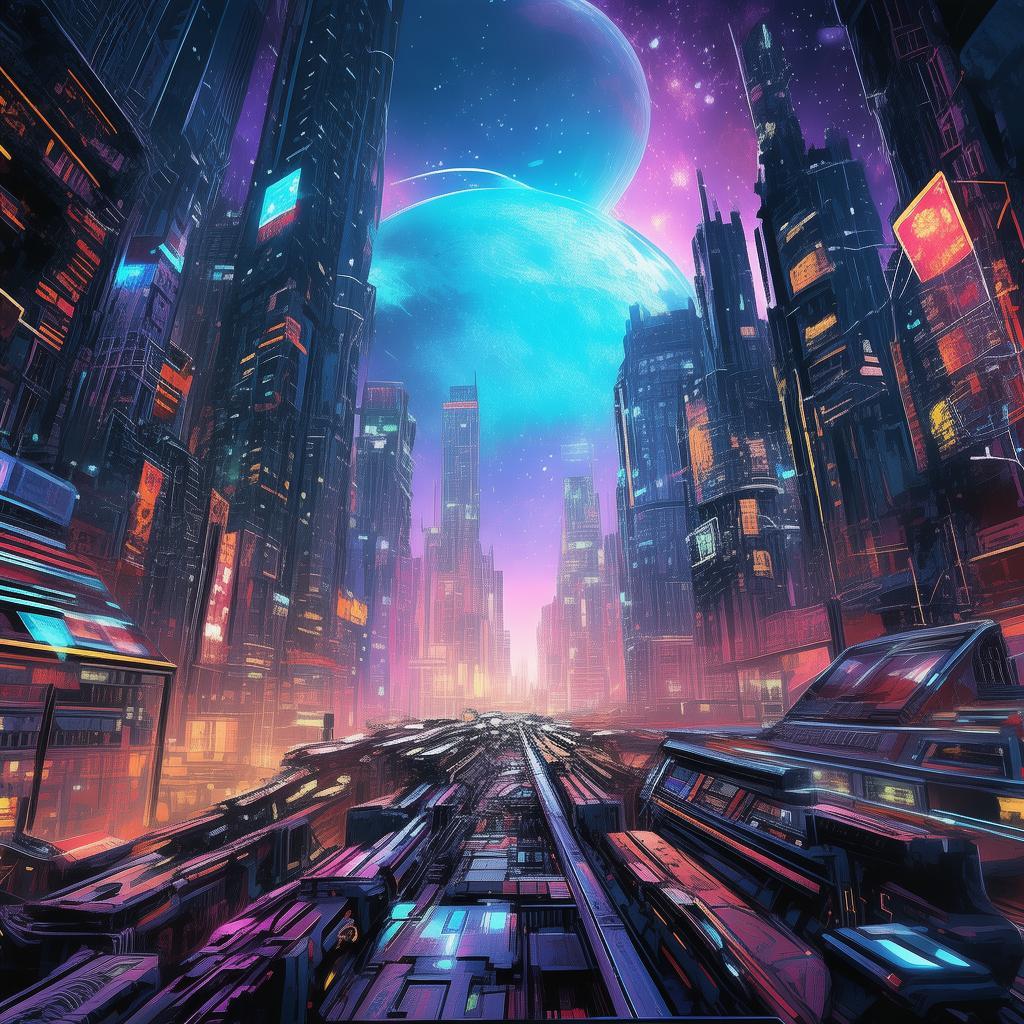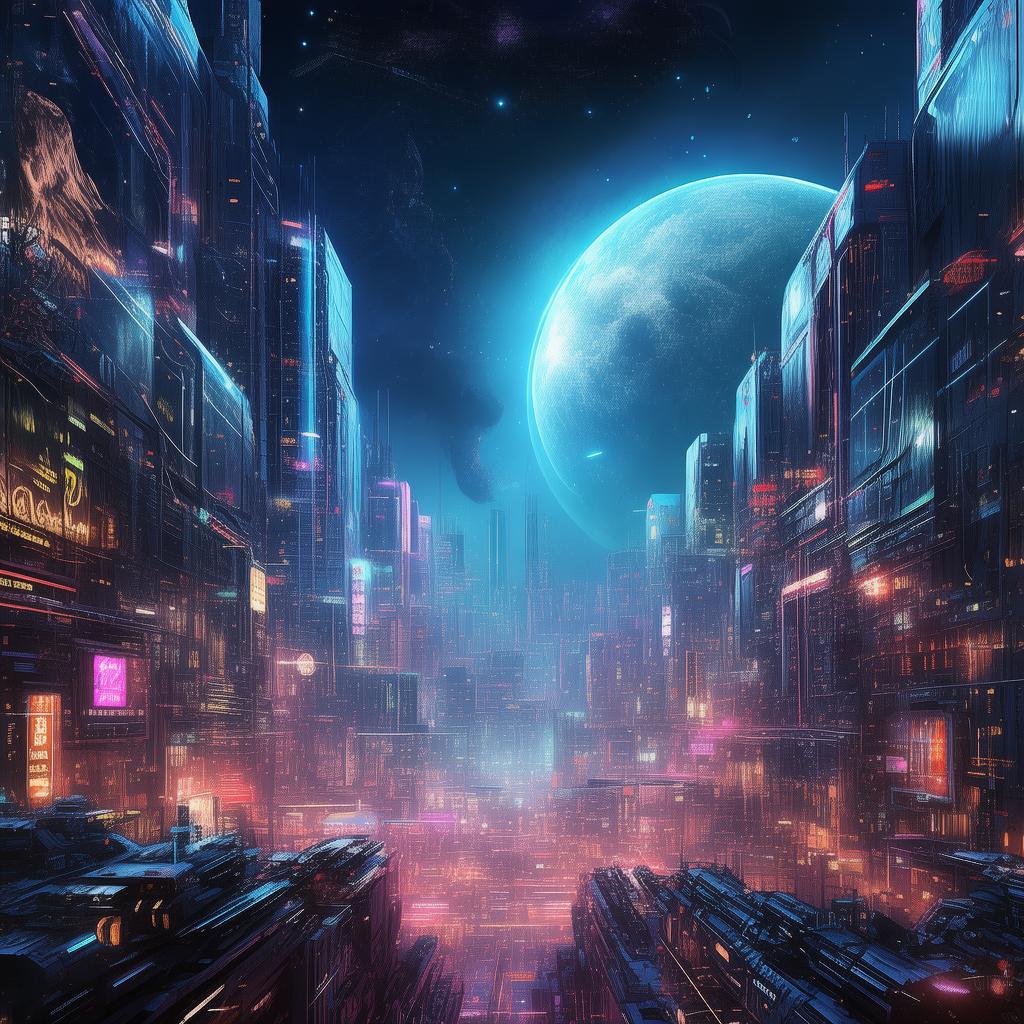The Echoes of the Digital Divide
In the year 2147, the world was a digital marvel. Skyscrapers shimmered with holographic advertisements, and the streets were lined with autonomous vehicles that glided silently. Yet, despite the technological advancements, a vast digital divide separated the elite from the masses.
Amidst the bustling metropolis of Neo-Tokyo, a young man named Kaito worked as a low-level tech engineer at a company called Digital Dreams. Kaito was an average man with an extraordinary gift: he could interface with the digital world with unparalleled precision. His mind was a canvas for the most intricate digital landscapes, and his fingers danced across keyboards with the grace of a maestro.
One evening, as Kaito was tinkering with a new project, he stumbled upon an encrypted file hidden in the depths of a server. The file was a prototype for a virtual wallpaper that promised to revolutionize the way people perceived their surroundings. The wallpaper, called "The Enigma," was designed to create a seamless blend of reality and virtual reality, allowing users to live in a world that was both real and imagined.
Intrigued by the possibilities, Kaito decided to download the prototype and experiment with it in his spare time. The first time he activated the wallpaper, he was transported to a lush, tropical paradise. The scenery was so vivid that he could feel the sun's warmth on his skin and hear the waves crashing in the distance. He was immediately hooked.
As he delved deeper into the wallpaper's capabilities, he discovered that it could not only alter the visual environment but also the sensory experiences. With the click of a button, he could taste the sweetness of a mango or the bitterness of a coffee bean. It was a world he could live in indefinitely, without ever leaving his home.

Kaito soon realized the potential of "The Enigma." If he could perfect the technology and make it accessible to the masses, he would become the next tech sensation. With this thought in mind, he began to modify the wallpaper, making it more immersive and user-friendly. The more he worked, the more he became absorbed in the virtual world, neglecting his responsibilities at Digital Dreams and even his own reality.
Word of Kaito's creation began to spread like wildfire. People from all walks of life flocked to him, desperate to experience the wonder of "The Enigma." But as the number of users grew, so did the demand for more advanced features. Kaito, driven by his ambition, continued to push the boundaries of the wallpaper's capabilities, unaware of the consequences of his actions.
The world outside of "The Enigma" began to fall apart. The elite who had access to the wallpaper became increasingly detached from reality, while the masses were left behind in a world of economic disparity and social strife. Kaito's once-close friend, Lila, noticed the changes in him. She saw the lines between Kaito's reality and the virtual world blur, and she feared for his sanity.
One day, Lila confronted Kaito. "Kaito, what are you doing?" she asked, her voice laced with concern. "You're creating a digital prison for people who are already living in one."
Kaito, caught off guard, defended his creation. "This is freedom, Lila! We should all have the chance to escape the drudgery of our lives and experience something new."
Lila shook her head, her eyes filled with tears. "But Kaito, what about the consequences? What if everyone becomes so dependent on this technology that they can't live without it?"
As Kaito pondered Lila's words, he began to see the truth in her argument. The more he delved into the virtual world, the more he realized that he was not just creating a new form of entertainment; he was also creating a new form of slavery.
That night, Kaito decided to stop work on "The Enigma." He deleted all his modifications and locked the prototype away. He knew that he had to take a stand against the technology he had created. He had to choose between personal gain and the ethical implications of his discovery.
The next day, Kaito made his decision public. He announced that "The Enigma" would no longer be available for download. He called for a worldwide discussion on the potential dangers of virtual reality and the importance of maintaining a balance between technology and humanity.
His announcement sparked a global debate. People began to question the direction in which technology was taking them. Kaito's actions led to the formation of a new movement dedicated to promoting ethical innovation and ensuring that the benefits of technology were shared by all.
In the end, Kaito's choice to put his own ambition aside and prioritize the greater good was what truly set him apart. He became a symbol of hope for a world that was increasingly becoming divided by the very technology that was meant to bring it together. And though the virtual wallpaper remained a distant memory, its echoes were felt in the ongoing conversation about the role of technology in shaping our future.
✨ Original Statement ✨
All articles published on this website (including but not limited to text, images, videos, and other content) are original or authorized for reposting and are protected by relevant laws. Without the explicit written permission of this website, no individual or organization may copy, modify, repost, or use the content for commercial purposes.
If you need to quote or cooperate, please contact this site for authorization. We reserve the right to pursue legal responsibility for any unauthorized use.
Hereby declared.









